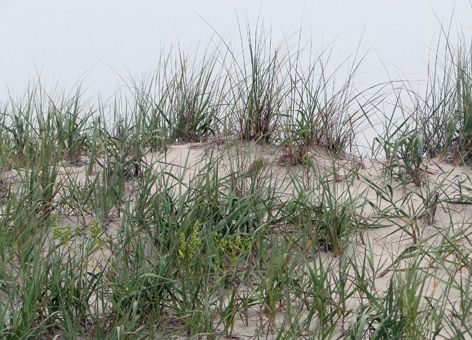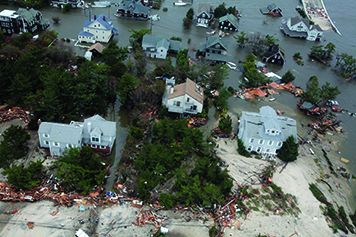How Much Do Coastal Ecosystems Protect People from Storms and What Is It Worth?
AUGUST 11, 2014 -- Nearly a year ago, one lawsuit spurred the question—how much do coastal ecosystems protect people from storms and what is that worth? It's a question NOAA scientists and economists are working to answer. At NOAA, our job is to protect our coasts, but often, coastal ecosystems are the ones protecting us.
When a severe storm hits, wetlands, sand dunes, reefs and other coastal ecosystems can slow waves down, reducing their height and intensity, and prevent erosion. That means less storm surge, more stable shorelines, and more resilient coastal communities. When the coastal Borough of Harvey Cedars, N.J. replenished beaches with sand dunes to offer this ecosystem service, a New Jersey couple, the Karans, sued on the grounds that the newly placed dunes obstructed the ocean view from their home. Initially, the court barred the jury from considering storm protection benefits from the dunes in their decision. The jury awarded the Karans $375,000, but New Jersey Supreme Court overturned the ruling. The jury should consider storm protection benefits, according to the Supreme Court, and when it did, the Karans' settlement dropped to $1.
Cases like this one spur a lot of questions for both science and the courts. NOAA has been supporting ecosystem services in court for decades through Natural Resource Damage Assessments (NRDA), but putting a price tag on ecosystem services isn't easy. Instead, NOAA often determines how ecosystem services were hurt and what it will take to replace them. Following a spill or chemical release, NOAA is one of a number of mandated state and federal natural resource trustees that assess if and how ecosystem services were injured and typically focuses on habitat and recreation. That assessment is then used to determine how much restoration the responsible party must provide to compensate for the injury.
Determining exactly how much storm protection may have been lost is another challenge. We know that already; there are a variety of estimates showing how much coastal ecosystems reduce a storm’s impact. Still, the science of storm protection is complicated. For example, an ecosystem’s type, location, topography, and local tides all impact its ability to protect us from storms. So, determining how much storm protection services were lost, who they benefited, and what type of restoration could compensate depends on all of those factors too. Ultimately, the decision on how to assess storm protection benefits may be up to the courts. The next case like Borough of Harvey Cedars v. Karan may provide some clues, but until then, we’ll keep working on the science.
 An official website of the United States government.
An official website of the United States government. 

